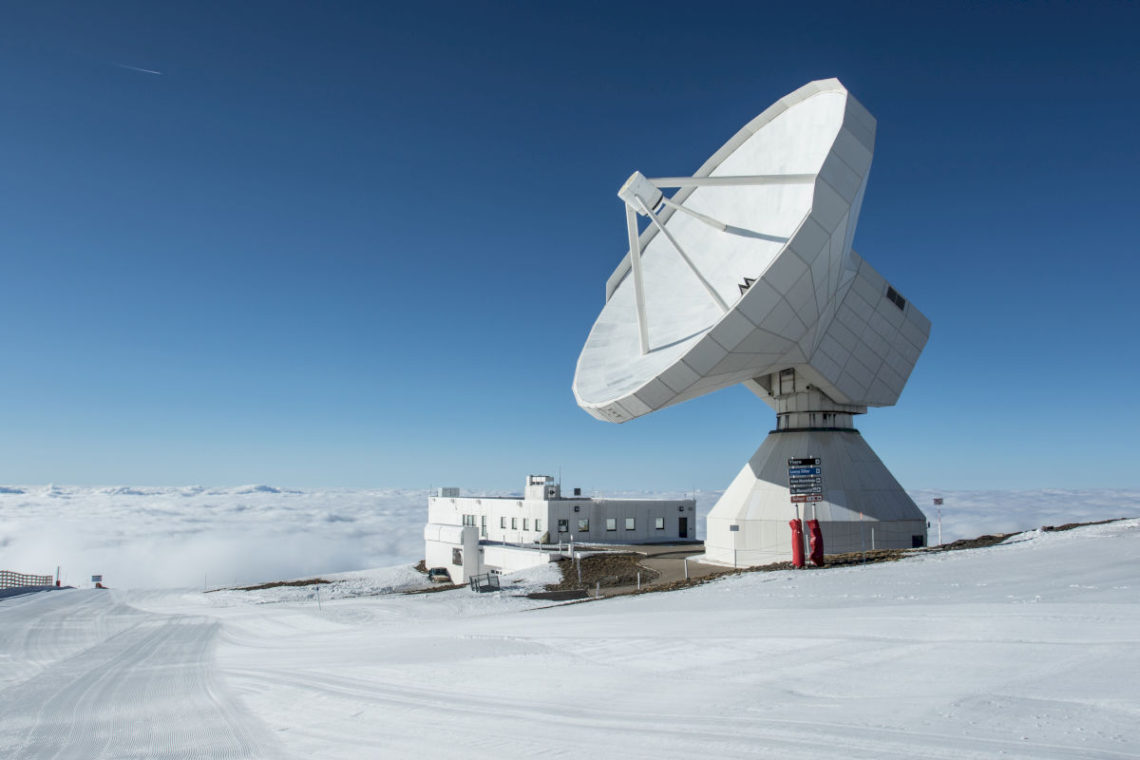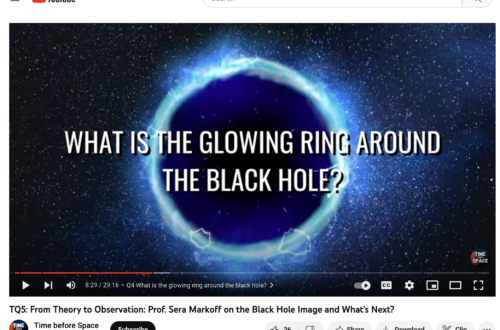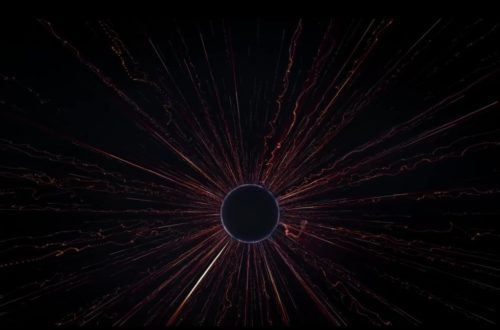Very soon, in August, I will have the honor to visit and use a radio dish of 30 meter diameter on Pico Vileta in the Spanish Sierra Nevada, the IRAM 30-m telescope. I will be able to use it for unraveling a long-standing mystery related to an extremely energetic object within our own Galaxy. While I have been using radio-telescope data before, this is certainly something new and exciting for me. As observational astronomers, we are taking a lot of time submitting proposals to telescopes in order to eventually get to observe our desired object. In my case, these objects were mostly very massive black holes that are extracting gravitational energy from their surroundings and blasting parts of it into deep space. While truly exciting, the downside for me was that I actually never had the chance to visit an observatory to “observe” these objects myself. I put “observe” in quotation marks, as the optical light was usually the least I cared about. 🙂 These black-hole engines are so powerful that they emit light at even higher energies, like the X-rays for instance. While they expel matter into their environment, they are, however, also very bright in the radio light – the other end of the electromagnetic spectrum. Despite being the least energetic light due to its long wavelengths, it witnesses extreme magnetized outflows of matter.

So, the romantic idea of an astronomer sitting on a mountain never became true for me due to a few delicate issues. First, X-ray observatories are not really found on Earth. We have to launch them into an orbit around Earth, as X-rays can (luckily) not penetrate our atmosphere. It would be inconvenient for an astronomer to visit an observatory in space, which is also moving at more than 20000 km/h. So, they are operated remotely from Earth. Radio waves, however, can penetrate our atmosphere and radio telescopes are therefore mostly found on Earth within our reach. As part of a project, I was able to visit the Effelsberg radio telescope, a beast of 100m diameter – one of, if not ‘the’ largest movable radio telescope on Earth with an incredibly complex steel construction. It was astonishing to once stand in the control room and watch a football-field-sized plain white dish slowly descending to eventually proudly manifest its full extent, fully covering an operator’s field of view. And yet, I never got to push a button in this control room. All data I have ever been successfully proposing for have been taken remotely. On top of that, our archives are packed with data that can kept me busy the rest of the time. Until now.
In our group in Amsterdam together with many collaborators, we are looking at the most extreme mass-attracting and eventually mass-expelling black-hole systems. Space seems way more extreme than anything we could express with words. While I talk of the “most extreme”, the next-generation optical telescope is called the “Extremely Large Telescope, ELT”, as if “large” wasn’t large enough. And indeed, it is not. Eskimos have a broad set of words for snow, like the Dutch for rain, but space and all its extremes is not really something that we humans are used to in our every-day life, so please excuse my helpless language.
Ok, let me introduce to you a peculiar object on the sky, which changed the way I do astronomy. This object is located in “our Galaxy” (meaning: the Galaxy we live in), the Milky Way. It consists of a compact object (black hole or neutron star) that attracts matter much much faster than any other system known in “our” Milky Way. This causes basically everything you can see in the figure below, showing the system dubbed “SS433”. Inside the remnant of an exploded star (a sphere of gas), the compact object seemed to have turned into a powerful energy source by attracting matter from its surroundings at immense rates. Parts of that energy are released by collimated and fast-moving “jet outflows”, which explains the straightened shape of the impacted nebula and why it shines bright in the radio light (see the figure below). The jets shown as zoom in below are largely exaggerated in size. Just for the fun of it: the cocoon structure that we can see here is about 10^12 times larger than the driving engine itself, assuming a black hole of ~16 solar masses. While the “size” of the black hole would be just some tens of kilometers, the impacted gas cocoon is actually 10^12 times larger. The number 10^12 may be hard to grasp. It is roughly the number of cells in our body or a bit more than the distance of the moon measured in millimeters, so a lot.

Very recent numerical simulations by Dimitrios Millas (KU Leuven) and Oliver Porth (UvA) nicely confirm what we see. They showed that the well-known jet of SS433 would under realistic conditions in fact terminate in its gas environment and create a structure similar to the observed cocoon. Independent observations by Su et al. 2018, however, very recently found evidence for HI and molecular CO gas located exactly in direction of SS433’s jets. This is shown in the picture below.

Several arguments have been proposed in the literature that this molecular gas may be supported by shocks, which in that case could only originate from SS433. If that was true, it would be astonishing, how this molecular gas could be located at around twice the distance to the central engine than the outer edge of the gas cocoon, which should be the point, where the jets break down. According to what we can see and simulate, today there should not be shocks piercing through the cocoon structure and the molecular gas should have nothing to do with the inner engine. If, however, the opposite was true, this would shed a completely new light onto our understanding of this system. One possible explanation would be that SS433 was driving extremely energetic shocks into its environment even before the radio jet, which we see in the first figure, switched on. Such an event could be comparable to so-called “Gamma Ray Bursts”, which are well-known and grew popularity with the recent “kilonova” event.
After we saw these results, it became clear that while strongly implicative, existing data are unable to answer our question, whether shocks are indeed present that far away from SS433’s compact and driving engine. The most straight-forward way to find out is to search for molecules that are only abundant in shocked environments. Those are for example SiO and CH3OH. It turns out that these molecules could be observed with radio telescopes that are able to measure sub-millimeter wavelengths and sensitive enough for our purpose. The IRAM 30m telescope turned out to be ideal for our quest. Luckily, our proposal to the Scientific Board of the facility was accepted and we were granted three nights of observing time. These observations will happen in the beginning of August. It fulfills me with joy to eventually experience the life of an astronomer that at least film directors have in mind. So what’s the plan? We will use the telescope to stare at the very point indicated in blue in the above figure for 18 hours, and see with own (radio) eyes, whether or not our hypothesis is in fact true.

You may wonder, why we need to stare for 18 hours? Why don’t we see what we are looking for instantaneously? The signal that we expect is extremely faint. The larger the telescope, the “deeper” we can see. The 30-meter diameter of the IRAM telescope is already quite a lot, but still: while the CO molecule is very bright, the molecules we are looking for may be underrepresented by a factor of a thousand, hence also resulting in a very faint signal. But it is not only the faintness that is a challenge. At long radio frequencies, one can observe day and night, basically everywhere on the planet, also during cloudy weather and rainfall. If radio waves wouldn’t be able to penetrate clouds, listening to your radio wouldn’t be possible either. Sub-millimeter wavelengths that we are looking for, however, are in fact limited by weather, rain, and clouds. This is why the IRAM 30m telescope is located at an elevation of 2850 meters, where the air mass between the observer and space is less and the atmospheric water content minimal. For us to know exactly where we are looking at, the surface of the parabola needs to be very accurate. And it is – to a precision of 55 micrometers.

I am looking forward to this new experience, which I will love to share with the general public when starting as part-time presenter at the ESO Supernova Planetarium and Visitor Center just one month later.






